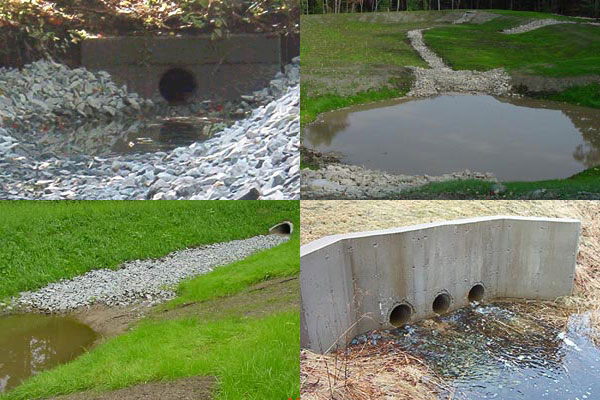Nature has designed itself in such a way that everything is used properly, preserved or goes back to the beginning of the cycle. Even the rainfall goes back to the streams and rivers to be evaporated again to form clouds. It also helps to replenish the water tables. However, with urban development, the mankind has created a misbalance in the ecological cycles. The rainfall that falls on the ground does not flow back to the streams and rivers anymore and in places where it does, it takes with it loads of non-biodegradable pollutants.
With urban development, we have changed the landscape of the earth and covered up the entire face of earth with concrete. There is not enough space left on ground where water can be absorbed. This leads to waterlogging and floods in many cities the world over. To control this situation, a lot of emphasis is now being laid on storm water treatment systems.
What Is A Storm Water Control System?
Nature has created wetland to control the storm waters. These wetlands help to slow down the flow of the surging water and also filter out the nutrients before it gets washed into the rivers and streams.
Now, this natural phenomenon is being mimicked by the storm water treatment systems. They are of different shapes, sizes and forms with the main objective of managing and controlling the storm water.
Types of Storm Water Systems:
- Bioretention Cells: Places where there is limited green space like in parking areas, this system works well. There is a depressed area, which is filled with porous material that helps in filtration. There is also an under drainage for ground water recharge.
- Elimination of Curb and Gutter: As curbs and gutters give a quick transport to storm water without filtration, a sheet flow is used. A uniform sheet flow is designed to direct the flow of water towards vegetation. This prevents erosion and encourages filtration by clayey soil.
- Storm Water Swales: Man made swales are areas that are shaped in such a way that the water gets quickly absorbed or easily flows into other waterways. In case of a shallow ditch, the swale will hold the storm water till it gets absorbed. Once the water gets absorbed or flows away, it remains dry.
- Infiltration Trenches: They are ditches that are filled with rocks. The storm water gets collected in these trenches and then gradually is released into the soil after filtering through the rocks.
- Permeable Pavement and Pavers: This is an alternate to concrete or asphalt surfaces. The porous surface and space between the pavers allow the storm water to reach an underground temporary reserve after filtration. From this reserve, the water can reach into the subsoil.
- Rain Barrels: These are installed on rooftops and collect storm water because of the slopes leading to the barrels. The collected storm water is then used for non-potable purposes like toilet flushes. This is water-conservation method, which can be used to collect huge volumes.
- Green Roofs and Storm water Planters: Here, the roof of a building is covered with lightweight planting mix that is highly porous. Plants and vegetation cover the planting mix. This is great way to conserve water and reduce pollution.
The more the storm water control systems are used the better would be the water and soil conservation. Controlling and giving direction to the storm water will also save a lot of government funds that goes in to flood rehabilitation.

